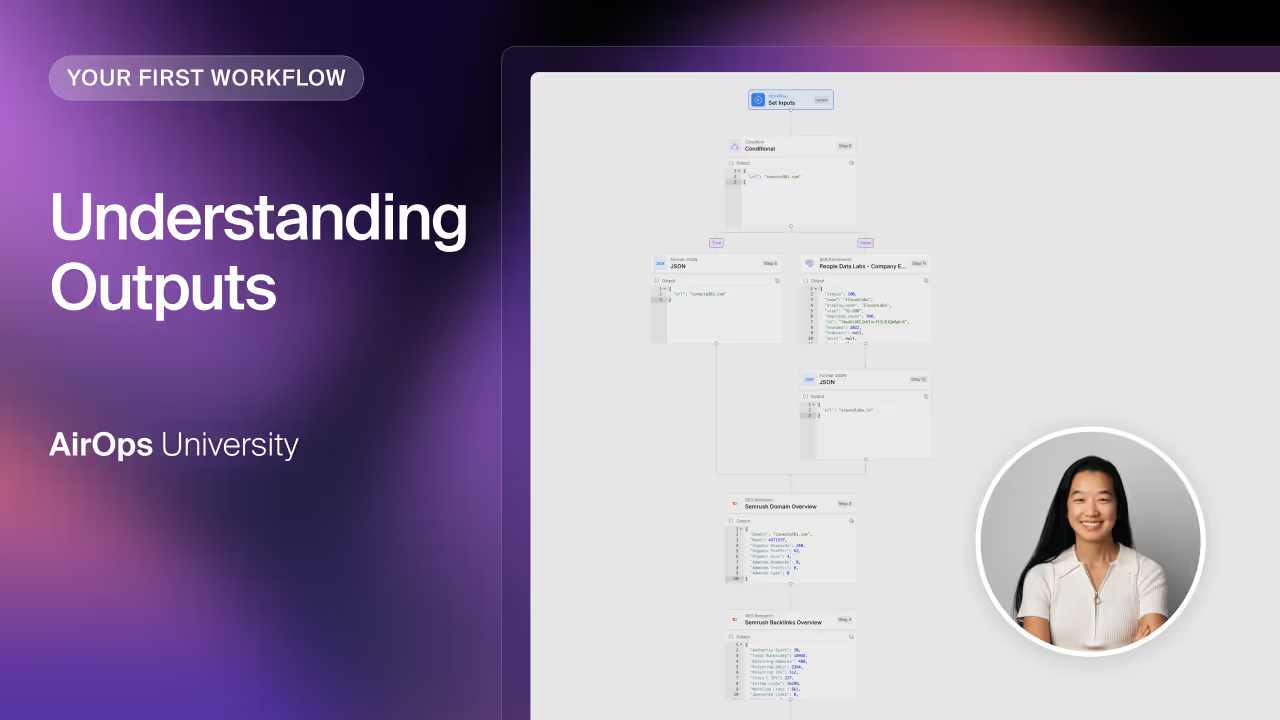Understanding Outputs
If you recall, there are three parts to a content workflow: the inputs, the steps, and then lastly the output. However, when creating a workflow, it's best practice to start with the output. First, envision the output you want to create.
Key Questions to Ask About Your Output
- What does the content look like?
- What is it composed of?
- What type of text do you want in your output?
Understanding your output is key because it informs the workflow construction itself.
Components of an Article Output
Take an article as an example. It might include:
- Tag
- Title
- Author
- Header image
- Other metadata
Each of these pieces becomes a step or input in your workflow.
Elements Within the Text
In addition to structural components, think about the text itself:
- Introduction
- H2 headers
- H3 headers
- Quotes
- Other formatting
Considering both structure and text elements helps you decompose the output into smaller chunks and articulate exactly what you want from the model.
Tip: Grab some paper and sketch out exactly what your output looks like. This will set the foundation for building your workflow.
Meta-Description Workflow Example
Before creating the workflow, define what you expect from the output. For a meta-description workflow, a simple expectation is: 150 to 160 characters returned from the model
You could also include the title tag, but in this case, the focus is on the meta-description alone. Defining your output upfront allows you to validate whether the workflow matches expectations.

